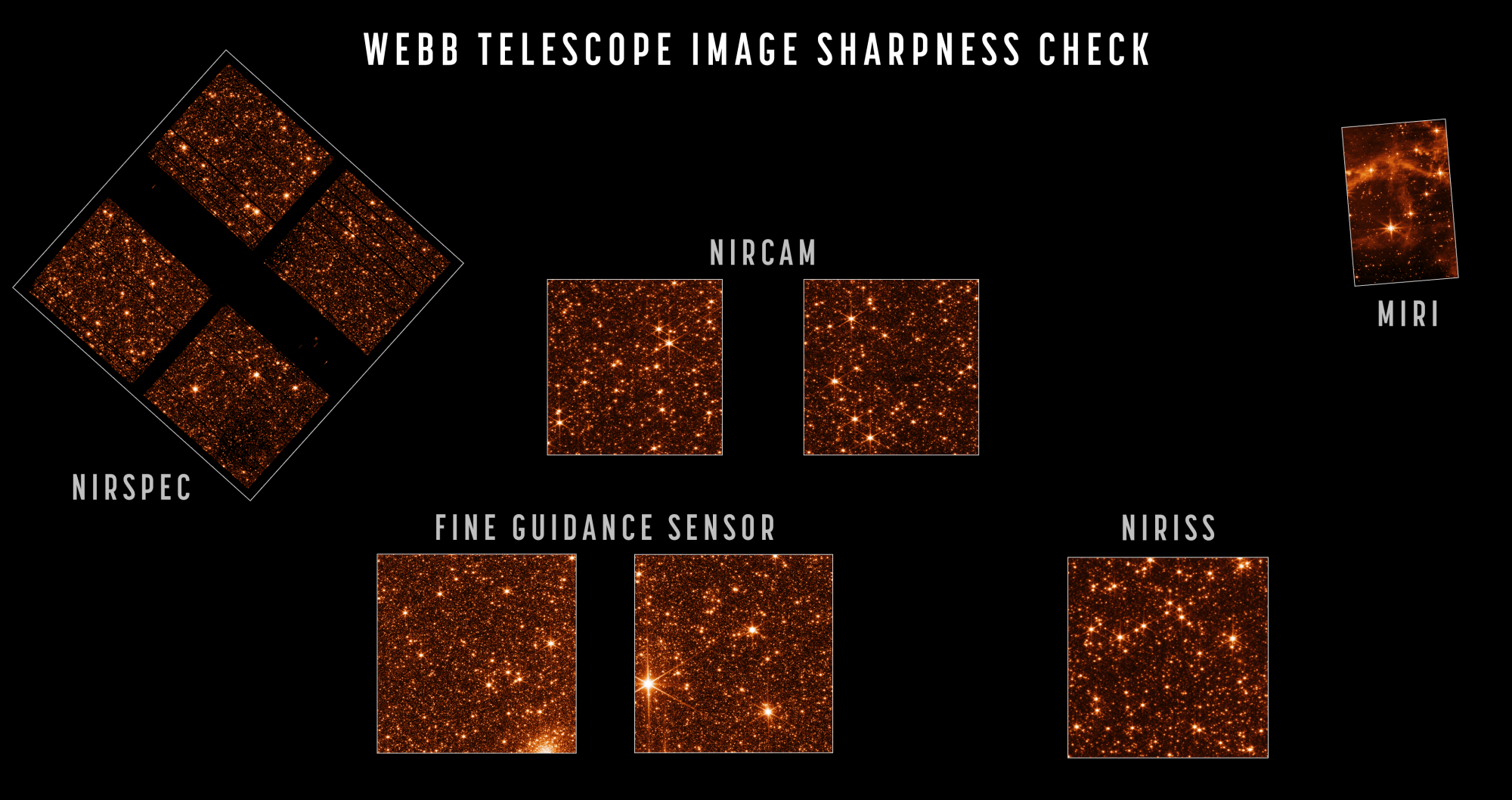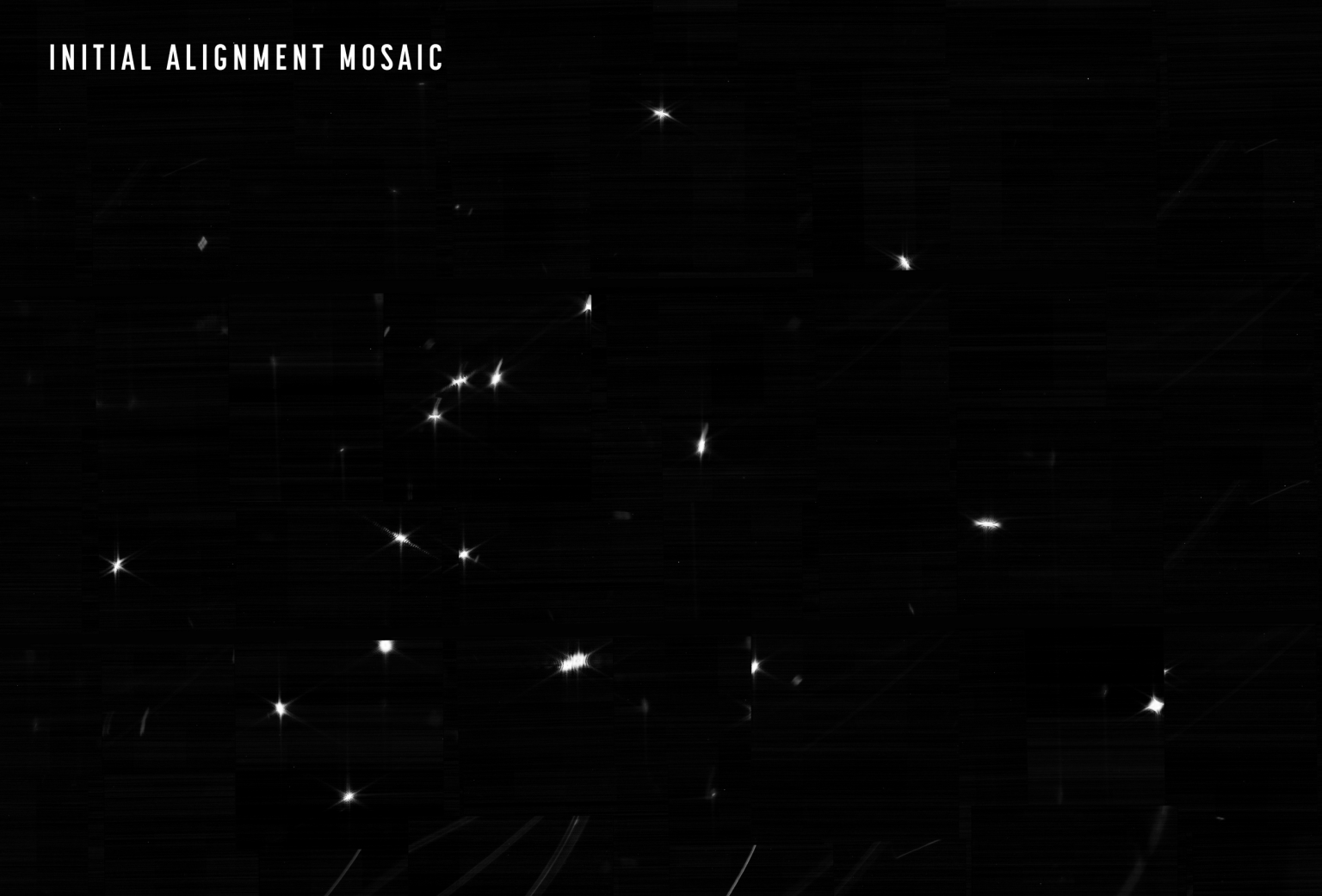NASA says the James Webb Space Telescope has completed a critical milestone: The preeminent observatory flying through deep space is now fully in focus, with receipts to prove it.
The U.S. space agency released a grouping of photos this week that demonstrates Webb is able to take razor-sharp pictures of the universe, with precision even beyond engineers’ wildest expectations.
The test images not only show that the alignment of Webb’s four science instruments is finished, but that the telescope is staring into an abyss of glittering stars, upon stars, upon stars.
“These images have profoundly changed the way I see the universe,” said Scott Acton, Webb’s wavefront sensing and controls scientist from Ball Aerospace, in a statement. “We are surrounded by a symphony of creation; there are galaxies everywhere! It is my hope that everyone in the world can see them.”

NASA released a grouping of photos this week that demonstrates Webb is able to take razor-sharp pictures of the universe,
Credit: NASA/STScI
For the test, Webb pointed at part of the Large Magellanic Cloud, a small satellite galaxy of the Milky Way, revealing a deep, dense field of hundreds of thousands of stars, registering across all the observatory’s sensors. Though space telescope images sometimes recreate color the way people’s eyes perceive them, other times they’re selected to highlight specific features. Engineers chose the scarlet palette to emphasize contrast.
The image resolution is “as good as physically possible” for the size of the telescope, according to a NASA blog post on the milestone achievement. From now on, the only changes will be small, periodic adjustments to the primary mirror segments.
The telescope has come a long way since its first snapshot in February, showing 18 separate golden blurry blobs representing one star. NASA promised further calibration of the instrument would refine its capability to make the star look like a star. By mid-March, a new photo delivered on that promise: a star in Ursa Major, crystal-clear and flaming red with large spikes.

The telescope has come a long way since its first snapshot in February, showing 18 separate golden blurry blobs representing one star.
Credit: NASA
“Just looking at (that aligned Webb photo) on your phone, all you see is that star,” said Bob Cabana, NASA’s associate administrator and a former astronaut, said during an unrelated briefing on Tuesday. “But if you spread it out with your fingers, there are galaxies behind that star that have never been seen before, and that’s going to be absolutely amazing.”
Webb, a collaboration between NASA, the European Space Agency, and the Canadian Space Agency, will observe some of the oldest, faintest light in the universe. The powerful telescope will study a period less than 300 million years after the Big Bang, when many of the first stars and galaxies were born. Scientists also will use it to peer into the atmospheres of planets outside our solar system, called exoplanets. Discoveries of water and methane, for example, could be signs of potential habitability or biological activity — main ingredients of life.
Astronomers anticipate the telescope will facilitate a golden age in our understanding of the cosmos, providing never-before-seen snapshots of space billions of light-years away.
“These images have profoundly changed the way I see the universe.”
The team is now moving forward with the final steps, known as science instrument commissioning. The process will take about two months to complete before the telescope is finally ready to do what it was meant to do: conduct groundbreaking research.
Each instrument — NIRCam, NIRISS, MIRI, and NIRSpec — is a complex set of detectors with lenses, masks, filters, and customized equipment that help it perform science. The specialized characteristics of these instruments will be configured and operated in different combinations to confirm their readiness for research, according to NASA.
Part of that process also will involve pointing the telescope at different areas in the sky where the total amount of solar radiation hitting the observatory will vary to confirm its temperature remains stable while changing targets. The mirrors will be regularly checked as well to ensure they have maintained their aligned positions.
NASA officials have said a selection of eye-popping, gobsmacking photos will be released in June in full resolution with the accompanying scientific data. The agency hasn’t disclosed what celestial targets will be among those first photos.